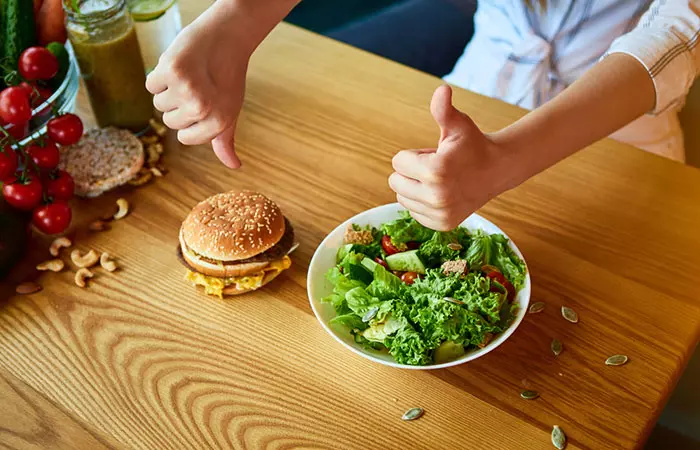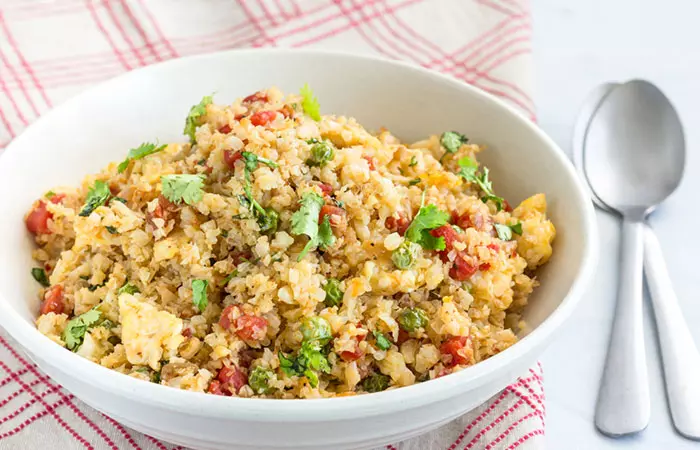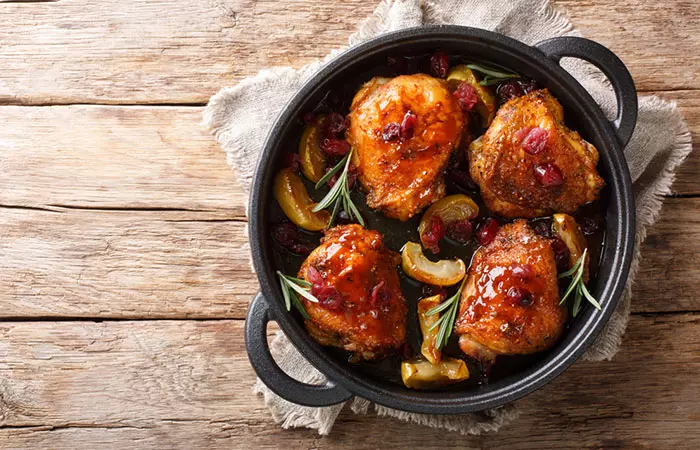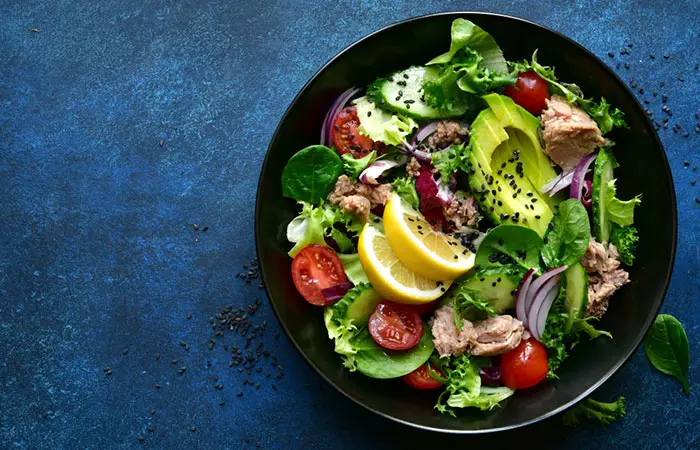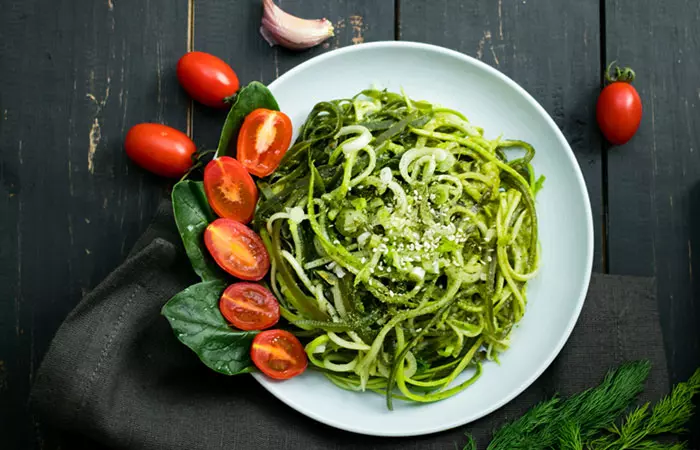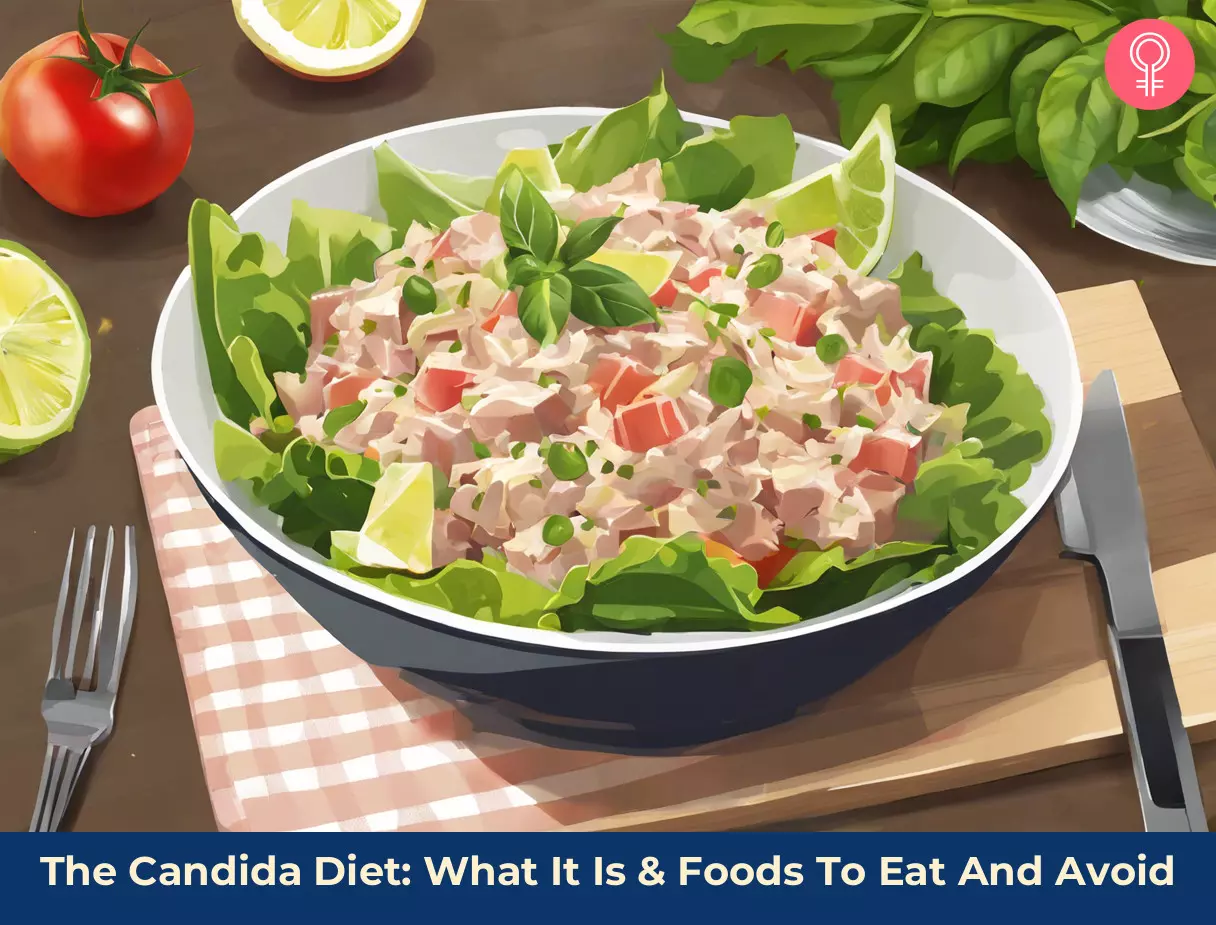While the common course of treatment is prescription antifungal medications, some believe that an anti-Candida diet can be beneficial. Many people advocate for the diet’s effectiveness in regulating blood sugar levels and improving overall digestive health. Read this article to explore in detail the Candida diet, its merits and demerits, and its functions.
What Is The Candida Diet?
The Candida diet may be a potential treatment for health conditions associated with Candida overgrowth in the body. However, research supporting its efficacy is limited. Since this diet targets yeast overgrowth, food items that encourage the spread of yeast, such as sugars and carbohydrates, are eliminated from the diet. Instead, the emphasis is on consuming foods that have anti-inflammatory properties and improve gut health without irritating the gastrointestinal tract. The diet is customized as per the individual’s specific Candida-related condition to help create a healthy gut environment and restrain fungal infections (1). According to the Centers For Disease Control And Prevention (CDC), candidemiai A common fungal infection where the Candida species are detected in the blood and has a high mortality rate. is one of the most commonly reported bloodstream infections in the United States (2). It estimates that about 25,000 candidemia cases occur per annum. Further, it may entail 3 to 13 days of hospitalization with $6000 to $29,000 in medical expenses, depending on the severity of the infection. Candidemia is just one form of invasive candidiasisi A fungal infection caused by Candida overgrowth in the body and typically occurs on the skin or mucous membranes. that may also infect the bones, kidneys, heart, and other organs (2). Once detected, Candida overgrowth must be addressed immediately. The gravity of this condition has led people to do their own research and personalize an anti-Candida diet. The following section explores how the Candida diet may help manage the spread of the yeast overgrowth.
How Does The Candida Diet Work?
The primary objective of this diet is to eliminate foods that might promote Candida overgrowth in the gut. Sugars, refined carbohydrates, high-glycemic foodsi Carbohydrates that are easily broken down and absorbed by the body and rapidly elevate blood sugar levels. , gluten, certain types of dairy, and processed foods are avoided or limited as they may encourage the spread of the yeast infection. The diet includes low-sugar fruits, non-starchy vegetables, healthy fats, gluten-free grains, high-quality proteins, probiotic dairy, fermented (non-moldy) foods, non-caffeinated beverages, and other foods with antifungal properties. Incorporating home remedies for yeast infection while following a Candida diet can help manage symptoms naturally and prevent recurring infections. Note: This diet is not recommended long-term and may only be adopted as long as the Candida infection persists. Now that we understand the basic idea behind this diet, let us look at a few of its potential benefits.
Benefits Of The Candida Diet
Although there is limited scientific research to support the beneficial effects of the Candida diet, many swear by its effectiveness. Here are a few ways this diet may help with Candida-related health concerns. The diet may help restrain the overspread of fungal infection to help manage Candida overgrowth. The consumption of whole foods may result in a healthy gut microbiome that may improve digestive functions (3). Consuming probiotics may enhance the body’s immunity to combat future infections (4). Anecdotal evidence suggests that many feel less fatigued and more energetic while on the Candida diet. The diet eliminates fattening sugars, refined carbs, and processed food, which may help in healthy weight management (5). Some proponents of the diet have reported experiencing glowing and clearer skin while also finding relief from acne and eczema symptoms. Many individuals have reported enhanced mental clarity, improved focus, and decreased brain fog while on this diet. One of the naturally following consequences of the Candida diet is weight loss due to the elimination of fattening food groups. But is this weight loss healthy? Let us explore in the section below.
Can The Candida Diet Aid In Weight Loss?
The Candida diet is not intended for weight loss. However, dropping food groups that encourage weight gain may contribute to natural weight loss. The following factors may potentially aid in weight management. High-calorie foods like sugars and processed and deep-fried foods are not allowed on this diet, which may lead to weight loss. Refined carbs tend to increase blood sugar (6). This blood sugar spike may increase hunger pangs (7). This diet restricts carbohydrate intake, thus possibly curbing your appetite. The elimination of sugary and junk foods may decrease bloating and constipation and create the sensation of feeling lighter (8). The consumption of whole foods may encourage a gut cleanse and healthy microbiome (9). This can enhance metabolism and lead to better weight management (10). This diet may improve energy levels and reduce fatigue, which may consequently encourage more physical activity and calorie expenditure. The above-mentioned points suggest that weight loss with the candida diet may be theoretically possible. However, the diet is not recommended for weight loss as it lacks adequate nutrition. Also, as we saw, this diet’s primary focus is to help treat the yeast infection. It allows specific foods that help with this. We have listed these foods in detail in the next section.
Foods To Eat On The Candida Diet
The basic idea of this diet is to eat foods that help control Candida overgrowth without irritating the gastrointestinal tract. The following foods are generally allowed:
Proteins: Lean poultry, wild-caught fish, and eggs Low-Sugar Fruits (In Moderation): Green apples, avocados, kiwis, grapefruits, guava, and berries Non-Starchy Vegetables: Leafy greens (spinach, lettuce, kale, etc.), cruciferous vegetables (cauliflower, cabbage, broccoli, arugula, etc.), cucumbers, bell peppers, and other low-carb vegetables Healthy Fats: Unrefined coconut oil, extra-virgin olive oil, olives, sesame oil, and flax oil Herbs And Spices: Ginger, garlic, rosemary, thyme, oregano, and other anti-fungal herbs and spices Nuts And Seeds (In Moderation): Almonds, hemp seeds, chia seeds, walnuts, and other non-moldy nuts and seeds Probiotics: Yogurt and kefir made from unsweetened coconut milk Herbal Teas: Tea brewed from chamomile, ginger, peppermint, hibiscus, sage, and other herbs
Now that we know what foods are allowed on the Candida diet, let us also look at the foods you must avoid.
Foods To Avoid On The Candida Diet
The following foods may worsen the spread of Candida and, hence, are avoided on this diet.
Sugars: Any form of sugar and sweet ingredients like honey and maple syrup Refined Carbohydrates: Refined flour, white bread, white pasta, white rice, and food made from refined grains Processed Food: All processed foods, as they have hidden sugars and additives High-Sugar Fruits: Bananas, mangos, grapes, and dried fruits like raisins Starchy Vegetables: Potatoes, beans, peas, and corn Dairy Products: Most dairy products, as they promote yeast growth (11) Moldy Foods: Fermented foods that may get moldy, like cheese, vinegar, and pickled meats Caffeine: Coffee and caffeinated drinks Alcohol: All types of alcohol, as they can feed Candida and damage gut health
Keeping in mind the list of foods to avoid or include can be a challenge. So, to make things easy for you, we discuss a sample candida diet meal plan in the next section. Take a look.
Sample Candida Diet Meal Plan
Find below a sample 7-day Candida Diet meal plan. You can customize the Candida diet as per your food tolerances and preferences as long as it does not facilitate Candida overgrowth. On that note, we have listed a few simple anti-Candida recipes that you can incorporate into your meal plans.
Candida Diet Recipes
Try and experiment with these delicious recipes for a wholesome Candida Diet experience.
1. Cauliflower Rice Stir-Fry
Ingredients
1 grated cauliflower head (acts as a rice substitute) 2 cups of mixed vegetables (cucumber, bell peppers, tomatoes) 2 tablespoons of coconut aminosi A dark and thin sauce made of coconut sap that tastes similar to soy sauce and may be substituted as such. 1 tablespoon of olive oil 1 tablespoon of minced ginger
Preparation Time: 20 minutes How To Prepare
2. Baked Chicken Thighs
Ingredients
4 bone-in, skin-on chicken thighs 2 tablespoons of olive oil 1 teaspoon of dried rosemary 1 teaspoon of dried thyme 1 teaspoon of dried oregano Salt and pepper to taste
Preparation Time: 40 minutes How To Prepare
3. Tuna And Avocado Salad
Ingredients
2 cans of tuna with the water drained 2 diced ripe avocados ¼ cup of sliced red onions 3-4 halved cherry tomatoes Juice from 1 lime ½ cup of leafy greens ½ cucumber, sliced 1-2 tablespoons of fresh, chopped cilantro (optional) 1 teaspoon of roasted sesame seeds (optional) Salt and pepper to taste
Preparation Time: 15 minutes How To Prepare
4. Zucchini Noodles With Pesto
Ingredients
2 large zucchinis ½ cup of fresh basil 2 garlic cloves ¼ cup of pine nuts ¼ cup of olive oil Juice from 1 lemon Salt and pepper to taste
Preparation Time: 15-20 minutes How To Prepare You may experiment with your preferred toppings and seasonings with the given recipes as long as they are anti-Candida. So far, we have discussed the potential benefits of the Candida diet. However, long-term adherence to this diet may also have negative effects on your health. Learn more about these in the next section.
Disadvantages Of The Candida Diet
The Candida diet is a short-term diet plan and must be followed as long as a Candida-related infection persists. Long-term adherence may have a detrimental effect on your health. This diet is not backed by research and still remains a topic of debate among medical experts. Hence, be aware of its potential drawbacks.
While this short-term diet plan that lasts as long as the infection (2 days to 2 weeks) may not severely impact your health, there is no guarantee that it will alleviate its symptoms either. The restrictions on multiple vitamin- and mineral-rich fruits and vegetables may lead to nutrient deficiencies. Some individuals may feel a sense of deprivation due to its restrictive nature. People may also get bored of the diet due to a lack of variety and options. Following this diet in social settings is challenging as the restricted food types are commonly-used ingredients and their use cannot be monitored. Some individuals may experience extreme detox symptoms like fatigue, headache, and digestive issues. Some may also develop unhealthy eating habits, including the need to constantly check what they are eating. The Candida diet is complex for those unfamiliar with nutrition concepts, labels, and terminology.
Is the Candida diet suitable for everyone? No. The Candida diet is recommended only when an individual is experiencing Candida overgrowth and related health conditions. There are complex food rules that are not based on solid research. Therefore, this diet is not for everyone. Can I eat sweet potatoes on the Candida diet? No. All starchy foods and vegetables are not allowed in this diet as starch may promote yeast overgrowth (12). Can I eat oatmeal on the Candida diet? Yes. Oatmeal is allowed as it is considered an antifungal food that may ease related infections (13). Just ensure that the oatmeal is not the commercial sugary or gluten variety. What bread can I eat on the Candida diet? Yeast-free bread types are allowed. You can opt for bread made of coconut flour, almond flour, flaxseed, or mixed seeds as they do not support yeast growth. Which nuts to avoid on the Candida diet? Anecdotal evidence suggests that nuts like pistachios, cashews, and peanuts are prone to mold contamination and may promote yeast growth. Hence, they are typically avoided on this diet.
Illustration: The Candida Diet: What It Is & Foods To Eat And Avoid
While the Candida diet eases symptoms of Candida-related infections, its dietary guidelines may be complex for beginners. Check out this video for sample diet charts and interesting insights.
